
No matter what draws you outside, sometimes you need a closer look to take it all in and see more clearly. Whether you're birding, hiking, hunting, stargazing, or just exploring, the best binoculars can elevate your outdoor experiences and your connection to the natural world. The ability to see things at a greater distance (and with more detail than the naked eye), can take your outdoor experience to the next level.
Not only that, but a good set of binoculars is just plain practical—helping you scout ahead on an unfamiliar trail or keep a lookout for bad weather on the horizon. For some activities, binoculars may be the most useful thing you carry, and even almost essential, for instance helping you pick out that rare bird hidden in a tangle of leaves and tree limbs.
But with so many options available, how do you know what binoculars are right for you and your favorite activities? That's why we focused on the best binoculars for several different outdoor activities. With options available at every price point, you’re sure to find something on this list that appeals to your sense of adventure.
Why Trust Us?
The ACTIVE Reviews Team is made up of fitness and wellness experts that include athletes, coaches, and certified trainers who bring years of knowledge and experience to each review. Collectively, the team has spent countless hours researching equipment, gear, and recovery tools in order to create the most accurate, authentic content for our readers. Customer satisfaction is also a key part of our review process, which is why we only feature products that are highly rated.
The Best Binoculars - Our Top Picks
- Best Binoculars Overall: Leupold BX-4 Pro Guide HD
- Best Binoculars for Hunting : Nikon Monarch M7
- Best Binoculars for Birding: Zeiss 8X42
- Best Compact Binoculars: Pentax AD 8X25
- Best Night Vision Binoculars: CREATIVE XP Night Vision Goggles
- Best Binoculars for Stargazing: Canon 10X42 L
- Best Binoculars for Long Distance: Nikon Sportstar Zoom
- Best Budget Binoculars : ICFPWR High Definition Binoculars
- Best Binoculars for Hiking: Leica Trinovid HD Robust Lightweight
- Best Binoculars for Kids: Opticron Savanna WP
Best Binoculars Overall - Leupold BX-4 Pro Guide HD
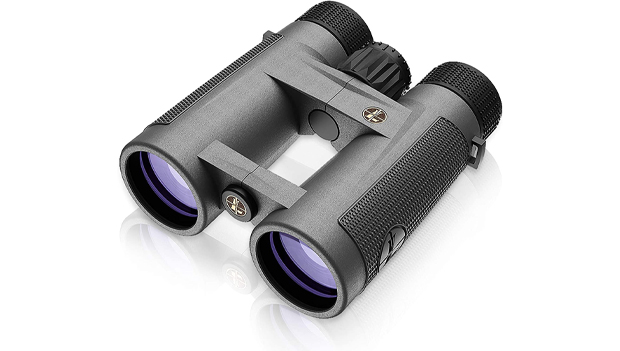
SPECS
- Power: 10x42
- Material: Aluminum
- Weight: 24 oz.
- Length: 5.60"
- Eye relief: 16mm
The Leupold BX-4 Pro Guide HD offers clarity and durability for a great all-around pair of binoculars. With the 10x42 power and objective lens width these binoculars offer strong magnification and clear low-light vision.
It comes with the "Twilight Max HD" light management system to offer superior low light performance. It is also waterproof and fog proof. The aluminum housing is light and durable. We especially like that these binoculars have twist-up eyecups to adjust eye relief, a precision central focus dial and diopter, eyepiece covers, and a deluxe shoulder strap. The binoculars also come with a field-ready case to keep your binoculars close, ready but protected while you're on the move. And with a middle-of-the-road price point, they offer a ton of value.
What We Like
- Good clarity and strong magnification even in low light
- Durable and waterproof/fog proof
- Comes with case
- Leupold Lifetime Guarantee
What We Don't Like
- Pricey
- Lens cap may not always fit tightly
BUY: Leupold BX-4 Pro Guide HD
Best Binoculars for Hunting – Nikon Monarch M7
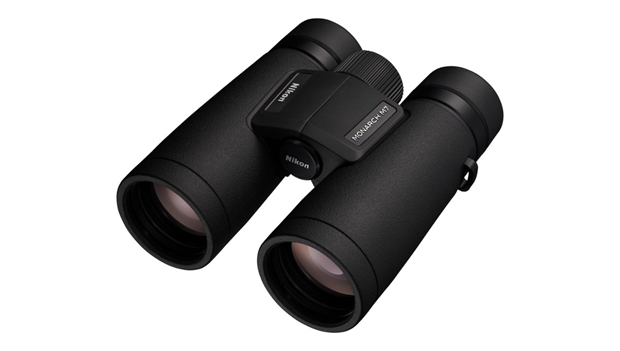
SPECS
- Power: 10x42
- Material: Rubber Coated
- Weight: 24 oz.
- Length: 5.60"
- Eye relief: 16.5mm
Looking to pack a pair of binoculars on your next hunting trip? The Nikon Monarch M7 help you clearly spot and identify wildlife with 10x magnification and a wide field of view. These binoculars are compact, lightweight, waterproof, fogproof, and the rubber-armored body allows for a steady grip and shock protection when you're out in the field.
The M7 uses Nikon ED (Extra-low Dispersion) glass to virtually eliminate common distortion, chromatic aberrations and color fringing for clear, high-resolution views. Plus, they have an oil and water resistant coating on the lenses to easily wipe smudges away, and feature a large smooth spinning focus knob. They also have adjustable eyecups, and a lockable diopter so you don't accidentally adjust your focus.
What We Like
- Wide field of vision
- Durable and waterproof/fog proof
- Rubberized non-slip grip
- Lightweight
What We Don't Like
- Higher price point for value
Best Binoculars for Birding - Zeiss 8x42

SPECS
- Power: 8x42
- Material: Glass
- Weight: 27.8 oz.
- Length: 6.8"
- Eye relief: 18mm
For bird watching enthusiasts, the Zeiss Victory 8x42 allows you to vividly experience nature. Due to the ergonomic design and balancing coupled with the dynamic fast focus feature, these binoculars allow for hours of fatigue-free birdwatching.
These binoculars utilize a seven-lens eyepiece to deliver extremely sharp focus all the way to the edges. The 92-percent light transmission rate and over five millimeters exit pupil allow for users to see detail even at dawn or dusk. The binoculars also have a waterproof body and protective coating.
What We Like
- Wide angle field of view
- Light transmission rate of 92%
- Ergonomic design
- Lightweight
What We Don't Like
- Higher on price spectrum
- Larger
Best Compact Binoculars - Pentax AD 8x25
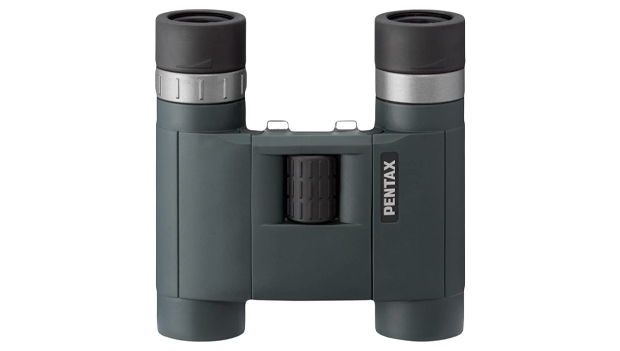
SPECS
- Power: 8x25
- Material: polycarbonate with rubber coating
- Weight: 10.6 oz.
- Length: 4.1"
- Eye relief: 21mm
When you want something that still provides good magnification but can also easily be stowed away in your pockets, these compact Pentax AD 8x25 binoculars balance size and quality. Especially geared towards travel, the asymmetrical hinge design allows the binoculars to fold neatly in order to fit in a pocket or a bag.
But, while these binoculars are small, they still offer clear images and maximize light transmission. And, the Pentax AD 8x25 offers a 25-year limited warranty.
What We Like
- Small and packable
- Waterproof
- Lightweight
What We Don't Like
- Not as powerful or durable
- Narrower field of vision
- Focus knob smaller
Best Night Vision Binoculars - Creative XP Night Vision Goggles
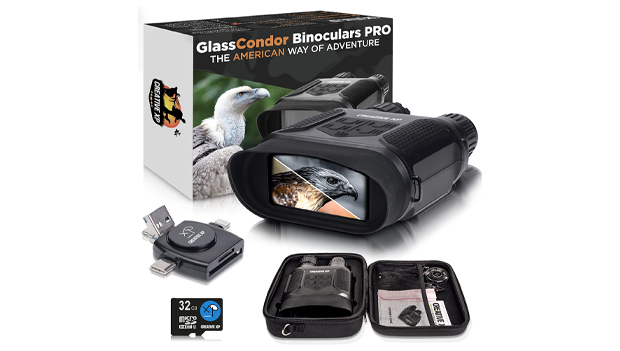
- Power: 7x31
- Material: Plastic
- Weight: 45.76 oz.
- Length: 6.8"
- Eye relief: 4mm
If you’re wanting a good set of binoculars to sport at night, we recommend the Creative XP Night Vision goggles. These binoculars offer you the ability to see in complete darkness without ambient light, plus they feature an infrared illuminator.
They’re also waterproof, and use scratch, oil, and dirt-resistant lenses. We also like that these binoc’s come with a protective case, a phone/computer SD card reader, a neck strap, a 32 GB SD card, and a USB cable.
What We Like
- Night vision
- Still can function in daytime
What We Don't Like
- Not as high quality binoculars for general daytime use
- Battery powered
BUY: Creative XP Night Vision Goggles
Best Binoculars for Stargazing - Canon 10x42 L
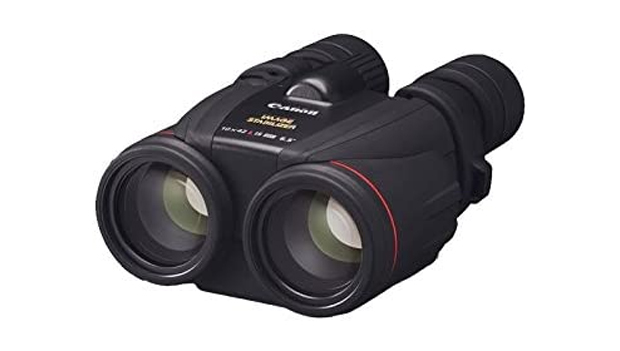
SPECS
- Power: 10x42
- Material: Metallic coating
- Weight: 39.2 oz.
- Length: 5.60"
- Eye relief: 16mm
Prevent shaky viewing of the night sky with the Canon 10x42 L Image Stabilization Waterproof Binoculars, the first waterproof Canon binoculars to incorporate Canon's exclusive Image Stabilizer technology. These binoculars provide an exceptionally bright view, even in low-light conditions.
No matter how dark the conditions are, these binoculars provide a stunning amount of clarity and magnification—ideal for stargazing. They’re also fogproof so you can still spot the Big Dipper even in unfavorable weather conditions.
What We Like
- Good clarity and strong magnification even in low light
- Waterproof/fogproof
- Cannon stabilization technology
What We Don't Like
- Pricey
- AA-size batteries needed
- Heavy
Best Binoculars for Long Distance – Nikon Sportstar Zoom
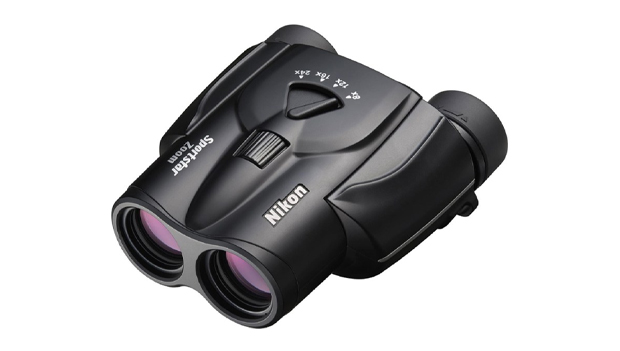
- Power: 8-24x25
- Material: Rubber coated
- Weight: 10.8 oz.
- Length: 4.8"
- Eye relief: 13mm
Sometimes you need something convenient for long-distance viewing whether you’re hunting or simply trying to birdwatch. And, the Nikon Sportstar Zoom allows you to easily adjust magnification power by pushing the zoom control lever, easily done with one finger.
We like that these binoculars offer a rugged yet ergonomic design, plus they’re also compact and packable.
What We Like
- Easy zoom
- Ergonomic design
- Lightweight
What We Don't Like
- Distance between pupils not adjustable
- Not as clear or as exception in low light as other options
Best Budget Binoculars - ICFPWR High Definition Binoculars
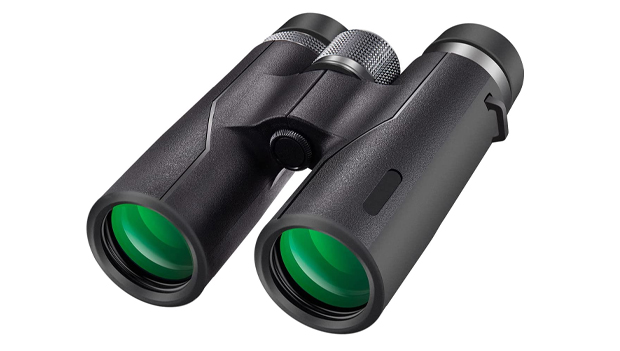
SPECS
- Power: 12x42
- Material: Rubber Coated Plastic
- Weight: 40.8 oz.
- Length: 8"
- Eye relief: 12mm
When you're on a budget, the ICFPWR High Definition Binoculars get the job done. They're waterproof and have anti-fog technology. And, they have a large objective width for various activities where a large field of view is desired.
Tripod-compatible with a non-slip rubberized grip, we also like that the focus is made of durable metal. For an affordable price, you still get a high-quality set of binoc’s.
What We Like
- Wide field of vision
- Waterproof/fog proof
- Rubberized non-slip grip
- Affordable
What We Don't Like
- May be lacking in quality compared to more expensive brands
- Heavy
BUY: ICFPWR High Definition Binoculars
Best Binoculars for Hiking – Leica Trinovid HD Robust Lightweight

SPECS
- Power: 10x32
- Material: Rubber armored
- Weight: 22.08 oz.
- Length: 5.12"
- Eye relief: 17mm
When you’re hiking, extra weight is the last thing you want to worry about. That’s why we picked the Leica Trinovid binoculars for keeping your light on your feet no matter the trail.
The LEICA Trinovid HD Robust Binoculars are lightweight and compact without compromising on quality. The LEICA utilizes an ergonomic design for a steady and confident grip and the focus allows for precise adjustment. These binoculars are resilient, rugged, and water resistant.
What We Like
- Wide field of vision
- Durable and waterproof/fog proof
- Rubberized non-slip grip
- Lightweight
What We Don't Like
- Pricey
- Only water resistant, not waterproof
BUY: Leica Trinovid HD Robust Lightweight
Best Binoculars for kids – Opticron Savanna WP
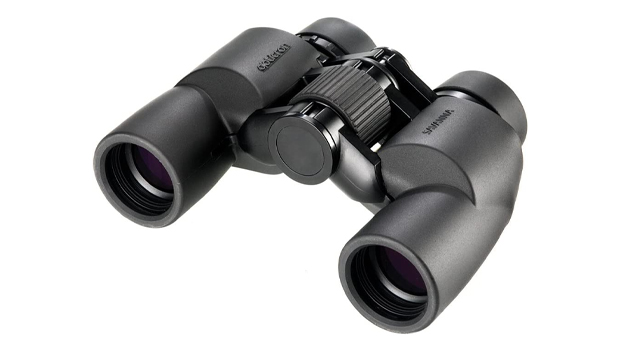
SPECS
- Power: 6x30
- Material: Rubber
- Weight: 17 oz.
- Length: 4.5"
- Eye relief: 21mm
Get your kids interested in the outdoors with the Opticron Savanna WP binoculars. Made for children seven and up, these binoculars are rugged and waterproof. They're also smaller, which makes them a good compact option for adults, too.
What We Like
- Kid-friendly
- Durable and waterproof
- Lightweight
What We Don't Like
- Somewhat pricey
What to Consider When Shopping for a pair of Binoculars
Primary Activity
The first consideration is what you want to use your binoculars for. If you are hiking or traveling you may not want binoculars that are the biggest or heaviest. If you are birding or hunting early or late in the day, you may want binoculars that function better in low light or have a larger field of view. And if you are often in the elements, you may want more durable binoculars that can withstand any type of weather conditions (i.e., something waterproof and/or fog proof).
Numbers on the Binoculars
It's important to understand what the numbers on binoculars mean. A pair of binoculars may be marked as, for instance, "8x40". The first number, 8, is the magnification power. The second number, 40, is the objective lens diameter or width.
- First Number: Magnification Power. This number indicates how “powerful” the binoculars are. For example, a magnification power of 8 makes an object look 8 times closer than the unaided eye when looking through the binoculars.
- Second Number: Objective Lens Diameter/Width. The objective lens width shows the width of the binocular lens. If the number is higher, then the lens is wider and thus allows more light to pass through. For example, an objective lens width of 40 or 50 is better for use in low light, but a smaller width may be needed if you want a small, portable pair of binoculars.
Usability
Several features may make binoculars more user-friendly. These may include large and textured focusing knobs and diopters, textured grips, rubber eye-cups, etc.
Eye Relief
Eye relief refers to the distance from the eyepiece to your eye. This is especially important if you wear glasses. If you do, you should look for binoculars with eye relief long enough for your glasses. If you don't wear glasses, binoculars often have expandable rubber eye cups that will decrease the eye relief and shorten the distance between your eye and the glass.
Durability
Depending on your primary use, your binoculars may need to be tough. Will they be tossed around in your car or backpack, or jostled as you chase after some wild game? Or, will they be out with you in the rain or snow?
Weight and Size
Binoculars come in many sizes. You'll need to decide if you want a larger or smaller pair depending on how much you will be carrying them around. While a smaller pair may be lighter and smaller, though, it will not be as powerful and may not have optics of the same quality as a larger pair.
Storage
Many binoculars come with a lanyard and a storage case. Be on the lookout for binoculars with a comfortable neoprene lanyard that is comfortable on your neck. Also, depending on how you will use them, a binocular harness can be helpful. A harness or field case can hold the binoculars close to your body and will prevent the binoculars from swinging or bouncing as you walk or run.
Warranty
Be sure to check if there is a warranty that may protect your binoculars from defects or damage. Some brands come with 25-year or even lifetime warranties. We also recommend reading the fine print before you purchase a pair.
Price
Finally, before you start browsing different binoculars, it's helpful to know how much you're willing to spend. Many binoculars range in price from $50 to over $2,000 so luckily there’s options for every budget.
FAQs About Binoculars
How do you calibrate your binoculars?
Calibrating binoculars adjust your binoculars specifically to your eyes. You can do this on your binoculars if you have a diopter, which is another dial (not the focus), that is usually near the right or left eye cup. Adjusting the diopter allows you to take any differences between your left or right eye into account, which is especially important if you are nearsighted.
To calibrate your binoculars, first find an object about 30 feet away. Then, look through the binoculars, close the eye that has the diopter, and focus the binoculars with the focus knob. Then, open the eye you had closed and close the opposite eye while still looking at the same object. You now adjust the diopter (not the main focus knob) by turning it either left or right to bring the object into clear view. Now, your binoculars will be calibrated to your specific eyes.
Should you clean your binoculars?
It’s important to clean your binoculars regularly to maintain their quality and clarity—sand and grit can damage the lenses if you are not careful. Firstly, always keep your binoculars in a case when you aren't using them. Second, you need to make sure you do not scratch anything into the glass lenses. Use a soft lens cloth or compressed air when cleaning. Never use paper towels, your t-shirt, or any paper products, which can scratch the lens' protective coatings.
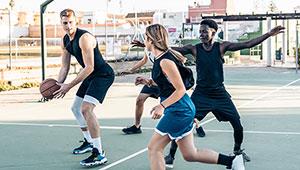
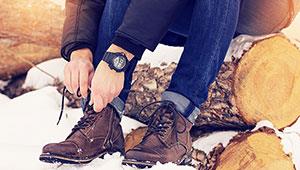
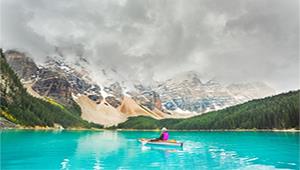


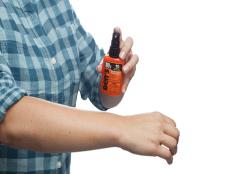

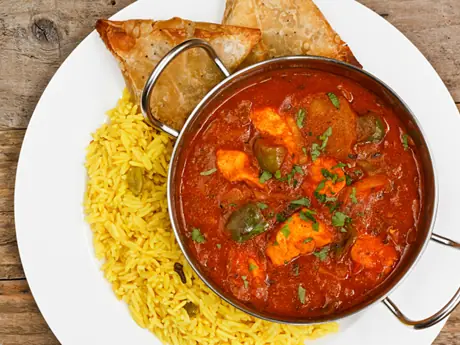
Discuss This Article